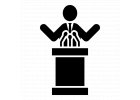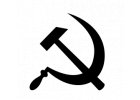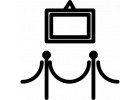Badges and medals
Medals were created as a natural addition to coins. They serve and have served mainly to commemorate significant events, anniversaries or to capture important personalities. Although medals have probably always appeared alongside coins, their golden age came in the 17th century. The biggest boom was in France, from where the fashion spread further. Until the early 19th century, medals were minted mainly in precious metals, with silver unsurprisingly dominating in frequency. From the 19th century onwards, copper or its alloy, bronze, became widely used in medal making.
The turn of the nineteenth and twentieth centuries brought a brief episode called tin. Probably the worst numismatic material which is already unstable at +13 °C and its degradation is even more powerful in sub-zero temperatures. This degradation is called the tin plague, it is destructive, difficult to remove and most importantly it is contagious. Tin medals in good condition are so rare and will become increasingly rare.
The twentieth century then brought a great boom in medal production due to cheaper technology and widespread competition. From our territory we can mention, for example, the Prague mint Šmakal or I. B. Pichl. At the end of the nineteenth century, but especially at the beginning of the twentieth century, a new type of object appeared - the badge. It is a much smaller and cheaper object. Just one stamp is needed and the material is cheaper. This gave other societies or associations access to the production of commemorative items. The golden age of badges is then the 1930s, which is violently interrupted by the Nazi occupation.
After the communist revolution, the mints were nationalised. The period of socialist realism begins. The medals feature mainly workers' themes, the badges depict communist holidays or events or present state-owned enterprises. In later years, medals also show a greater degree of freedom. With the fall of socialism came the free market and a large number of mints. Only time will tell whether the work of the new companies can withstand the ravages of time, just as the work of Austro-Hungarian or First Republic authors and mints.
-
 Breakdown by authors
Breakdown by authors
-
 Breakdown by region
Breakdown by region
-
 Army, legionnaires and resistance
Army, legionnaires and resistance
-
 Transport
Transport
-
 Firefighters
Firefighters
-
 Church
Church
-
 Personalities
Personalities
-
Patriotistika
-
 Political
Political
-
 Associations and clubs
Associations and clubs
-
Celebrations and anniversaries
-
 Sport and sports clubs
Sport and sports clubs
-
 Education
Education
-
 Socialism
Socialism
-
 Physical education clubs
Physical education clubs
-
Turistické štítky a přívěsky
-
Účelové známky
-
 Exhibitions and fairs
Exhibitions and fairs
-
 Honours
Honours
-
Zdravotnictví
-
 Other
Other
























































































































